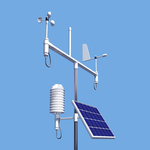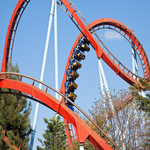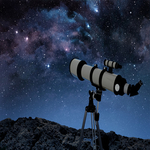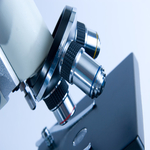Third Grade Science
Here is a list of the main scientific concepts students learn in third grade! These science concepts are organized into categories. To start, just click on any link. You can do these in any order at any pace that's right for you.
Chapters 1 & 2: Weather and The Atmosphere
___________________________
Chapter 1
Part 1: Weather and The Atmosphere
Chapter 1-1
Topic Intro & Explanation
Watch the FIRST video explanation on this page (Weather, Atmosphere and Water Cycles Part 1)
Chapter 1-2
Activities & Experiments
Choose at least two of the activities below.
Chapter 1-3
Activities & Experiments
Choose one or both of the activities below.
Chapter 1-4
Activities & Experiments
Choose one or both of the activities below.
___________________________
Chapter 2
Part 2: The Water Cycle
Chapter 2-1
Topic Intro & Explanation
Watch the SECOND video explanation on this page (Weather, Atmosphere and Water Cycles Part 2)
Chapter 2-2
Activities & Experiments
Do the activity below.
Chapter 2-3
Activities & Experiments
Do one or both of the following experiments
Chapter 1 & 2 Learning Evaluation
Complete the Learning Evaluation below.
___________________________
 |
Earth Science: Weather & Atmosphere A fundamental course in getting to know our planet better through the eyes of a scientist. You'll get to build a homemade weather station, complete with cloud tracker and hair hygrometer for measuring the Earth’s atmosphere while learning how to make predictions about the weather for the season. |
Chapters 3 & 4: Physics of Motion
___________________________
Chapter 3
Physics of Motion - Part 1
Chapter 3-1
Topic Intro & Explanation
Watch the FIRST video explanation on this page (Mechanics)
Chapter 3-2
Activities & Experiments
Work on the first activity below after watching the Topic Intro & Explanation video.
Chapter 3-3
Topic Intro & Explanation
Watch the SECOND video explanation on this page (Motion Part 1)
Chapter 3-4
Activities & Experiments
Work on at least three activities below after watching the Topic Intro & Explanation video.
- Driveway Races
- Newton’s First Law of Motion
- Barrel Roof
- Building Bridges
- Balloon Racers
- Newton’s Second Law
- Weighty Issue
- Look Out Below!
- Forever Falling
___________________________
Chapter 4
Physics of Motion - Part 2
Chapter 4-1
Topic Intro & Explanation with included Activity
Watch the two videos below and do the activity.
- Physics of Motion Special Teleclass
- Roller Coaster Physics (included in video above)
Chapter 4-2
Topic Intro & Explanation
Watch the videos below and select at least two of the following activities.
Chapter 4-3
Activities & Experiments
Work on at least two activities below after watching the Topic Intro & Explanation video.
- Newton’s Third Law
- Rocketball Launcher
- Detecting the Electric Field
- Detecting the Magnetic Field
- Force-full Cereal
- Flying Paper Clip
Chapters 3 & 4 Learning Evaluation
Complete the Learning Evaluation below.
___________________________
 |
Physics We’re going to study velocity, acceleration, forces, and Newton’s three laws of motion in this section. You’ll get to throw things, build g-force accelerometers, and much more as you uncover the basis of all physics in our crash-course in projectile motion. Build balloon racers, detect electric fields, construct a bridge that holds over 400 times its own weight, and find the Earth's magnetic pulse. |
Chapters 5 & 6: Astronomy
___________________________
Chapter 5
Astronomy - Part 1
Chapter 5-1
Topic Intro & Explanation
Watch the FIRST video explanation on this page (Astronomy: Planets, Moons & Binoculars)
Chapter 5-2
Activities & Experiments
Work on the two activities below after watching the Topic Intro & Explanation video.
Chapter 5-3
Topic Intro & Explanation
Watch the SECOND video explanation on this page (Comets, Asteroids & Meteorites)
Chapter 5-4
Activities & Experiments
Work on at least three activities below after watching the Topic Intro & Explanation video.
- Meteorites
- Simple Microscope & Telescope
- What’s Up in the Sky?
- Star Charting
- Watch Your Weight
- Magnetic Tornadoes
- Planetary Magnetic Fields
- Making Indoor Rainclouds
- Sky in a Jar
___________________________
Chapter 6
Astronomy - Part 2
Chapter 6-1
Topic Intro & Explanation
Watch the THIRD video explanation on this page (Stargazing)
Chapter 6-2
Topic Intro & Explanation
Select at least two of the following activities.
- Phases of the Moon
- Eclipses and Transits
- Star & Planet Trails
- Reason for the Seasons
- Solar Rotation
- Sundial
Chapters 5 & 6 Learning Evaluation
Complete the Learning Evaluation below.
___________________________
 |
Astronomy A comprehensive course that teaches the big ideas behind Newton’s ground-breaking work. Discover how to identify meteorites, learn about magnetic storms, listen to the song of the sun, learn how to chart the stars, and build a simple handheld telescope. |
Chapter 7: Microscopy
___________________________
Chapter 7
Microscopy
Chapter 7-1
Topic Intro & Explanation
Watch the FIRST video explanation on this page (Microbiology with Oliver)
Chapter 7-2
Activities & Experiments
Work on the three activities below after watching the Topic Intro & Explanation video.
Chapter 7-3
Topic Intro & Explanation
Watch the SECOND video explanation on this page (Microbiology with Oliver)
Chapter 7-4
Activities & Experiments
Work on at least two activities below after watching the Topic Intro & Explanation video.
Chapter 7-5
Topic Intro & Explanation
Watch the THIRD video explanation on this page (Microbiology with Oliver)
Chapter 7 Learning Evaluation
Complete the Learning Evaluation below.
___________________________
 |
Life Science This is an introduction to the microscope, and we’re going to not only how to use a microscope but also cover the basics of optics, slide preparation, and why we can see things that are invisible to the naked eye. Microscopes are basically two lenses put together to make things appear larger, and there are several tips and tricks to making viewing virtually invisible specimens. |
